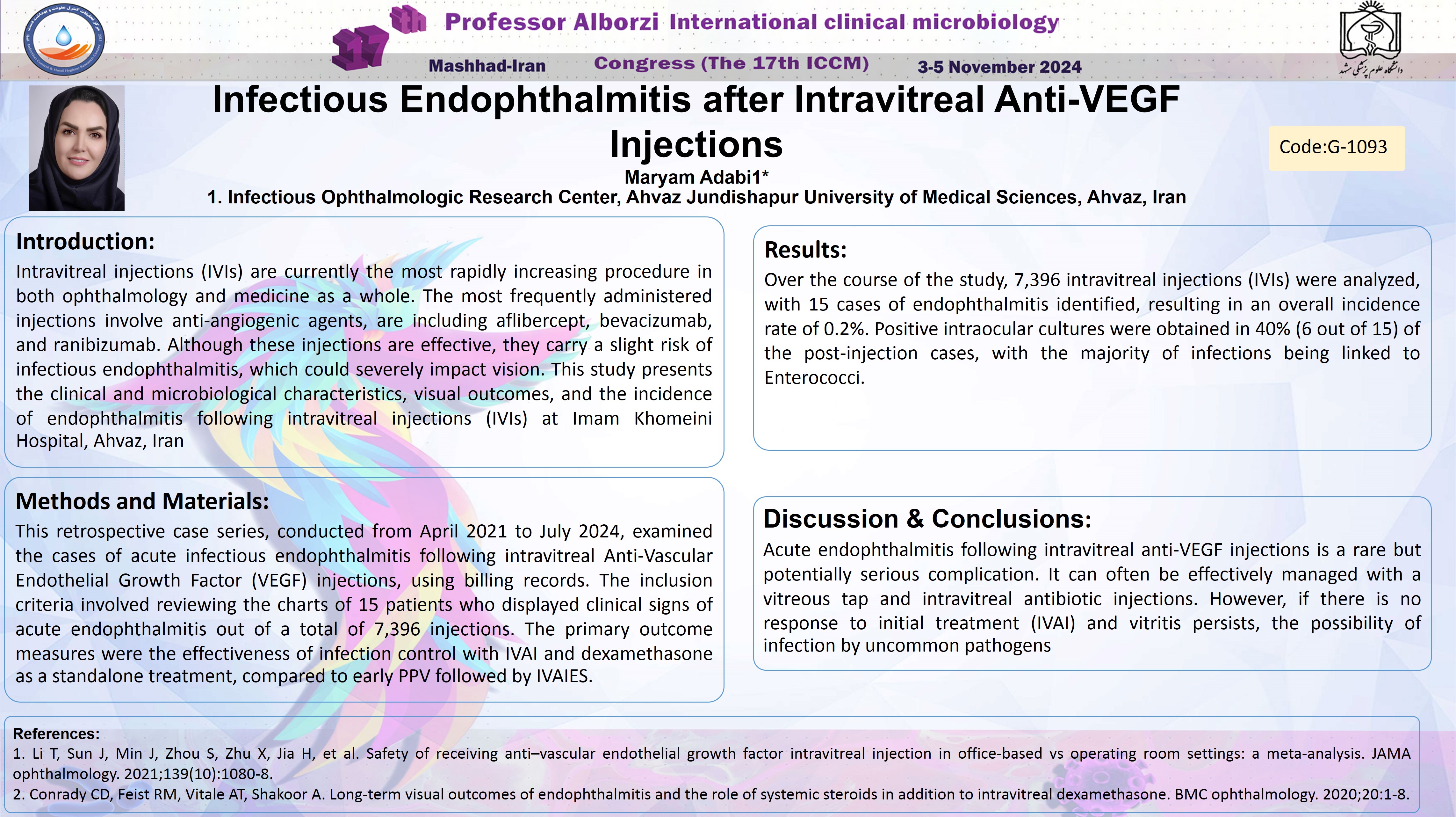Infectious Endophthalmitis after Intravitreal Anti-VEGF Injections: Incidence, Features, Management, and Microorganism Identification
کد: G-1093
نویسندگان: Maryam Adabi © ℗
زمان بندی: زمان بندی نشده!
دانلود: دانلود پوستر
خلاصه مقاله:
خلاصه مقاله
Background: Intravitreal injections (IVIs) are currently the most rapidly increasing procedure in both ophthalmology and medicine as a whole. They are commonly used for conditions such as Age-Related Macular Degeneration (AMD), diabetic retinopathy, and macular edema linked to venous occlusive disease. The most frequently administered injections involve anti-angiogenic agents, are including aflibercept, bevacizumab, and ranibizumab. Although these injections are effective, they carry a slight risk of infectious endophthalmitis, which could severely impact vision. Objectives: This study presents the clinical and microbiological characteristics, visual outcomes, and the incidence of endophthalmitis following intravitreal injections (IVIs) at Imam Khomeini Hospital, Ahvaz, Iran. Methods: This retrospective case series, conducted from April 2021 to July 2024, examined the incidence, clinical characteristics, management strategies, and microorganism identification in cases of acute infectious endophthalmitis following intravitreal Anti-Vascular Endothelial Growth Factor (VEGF) injections, using billing records. The inclusion criteria involved reviewing the charts of 15 patients who displayed clinical signs of acute endophthalmitis out of a total of 7,396 injections administered during the study period. Incomplete data were excluded. Nine patients received intravitreal antibiotic injections (IVAI), including vancomycin (1.0 mg/0.05mL), ceftazidime (2.25 mg/0.05mL), and dexamethasone (0.4 mg/0.1mL). Four patients were treated with intravitreal antibiotic injections and dexamethasone (0.4 mg/0.1mL), followed by pars plana vitrectomy (PPV) a few days later. Additionally, one patient underwent PPV with intravitreal antibiotic administration at the end of surgery (IVAIES). The primary outcome measures were the effectiveness of infection control with IVAI and dexamethasone as a standalone treatment, compared to early PPV followed by IVAIES. Results: Over the course of the study, 7,396 intravitreal injections (IVIs) were analyzed, with 15 cases of endophthalmitis identified, resulting in an overall incidence rate of 0.2%. Positive intraocular cultures were obtained in 40% (6 out of 15) of the post-injection cases, with the majority of infections being linked to Enterococci. Conclusion: Acute endophthalmitis following intravitreal anti-VEGF injections is a rare but potentially serious complication. It can often be effectively managed with a vitreous tap and intravitreal antibiotic injections. However, if there is no response to initial treatment (IVAI) and vitritis persists, the possibility of infection by uncommon pathogens
کلمات کلیدی
Endophtalmitis, intravitreal injection, vascular endothelial growth factor
